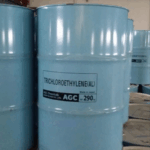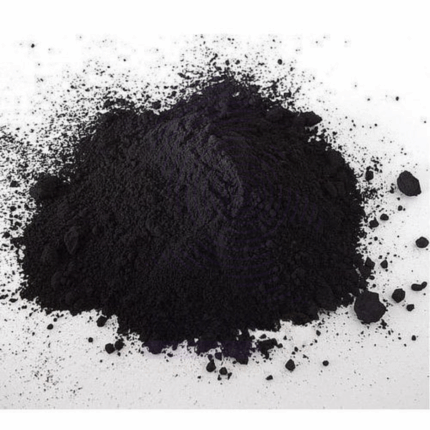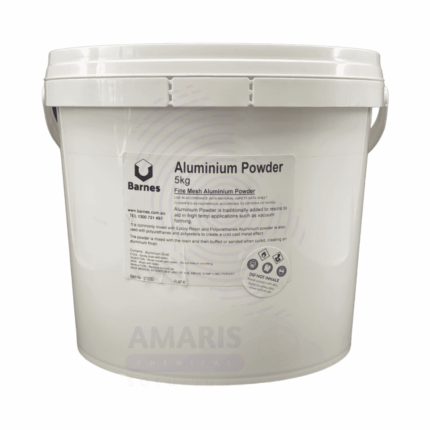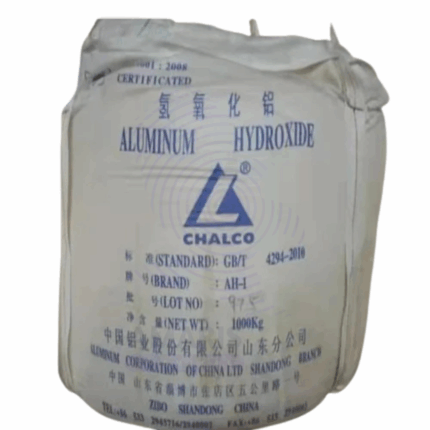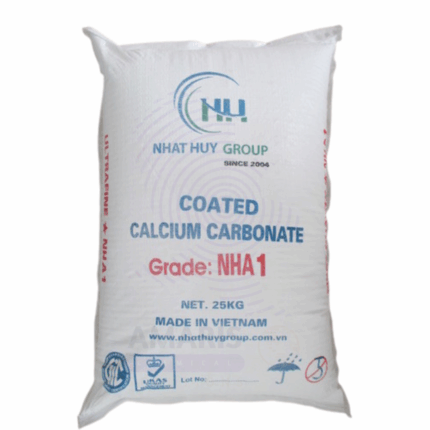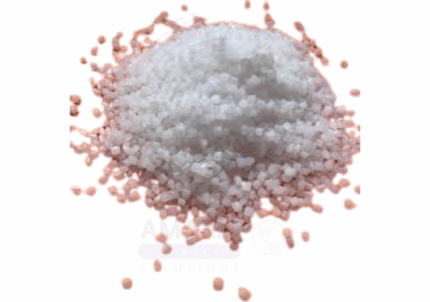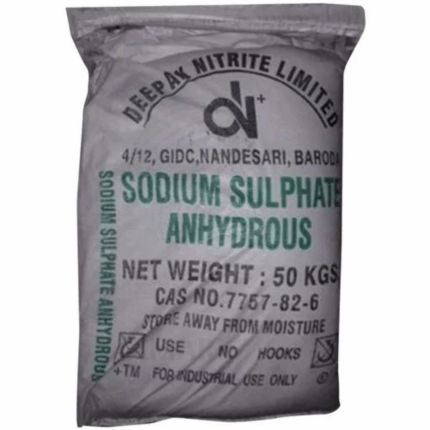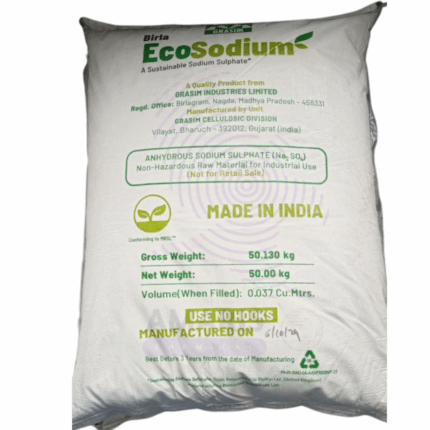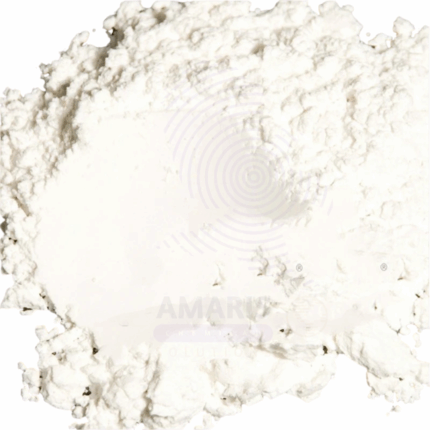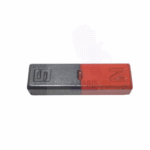
Magnet bar
$ 19.97 Original price was: $ 19.97.$ 19.87Current price is: $ 19.87.
Sodium Sulphate
$ 0.90 Original price was: $ 0.90.$ 0.79Current price is: $ 0.79.
Whatsapp Order
Sodium Sulphate (Na₂SO₄) is a white crystalline powder or granule, odorless and highly soluble in water. This 25kg packaged product is widely used in detergents, glass manufacturing, chemical industries, and pulp and paper processing. It acts as a filler, bulking agent, and drying agent, with excellent stability and non-reactivity under standard storage conditions. Its cost-effectiveness and availability make it an essential raw material in many industrial processes.
Description
Table of Contents
Toggle
Sodium Sulphate
Primary Uses
- Detergent Industry
- Filler and Builder: Used as a filler in powdered laundry detergents to improve flow and bulk.
- Water Softening: Helps soften water, enhancing detergent effectiveness.
- Formulation Ingredient: Acts as a carrier for other detergent components.
- Glass Manufacturing
- Glass Batch Ingredient: Used as a fluxing agent to lower melting temperature in glass production.
- Opacifier: Enhances opacity in specialty glasses and enamels.
- Pulp & Paper Industry
- Kraft Pulping Process: Used in recovery boilers as part of the chemical recovery cycle.
- Paper Finishing: Employed as a filler to improve paper brightness and opacity.
- Chemical Industry
- Sodium Source: Serves as a raw material for manufacturing sodium compounds like sodium sulfide and sodium silicate.
- Salt Bath in Dyeing: Used in textile dyeing as a leveling agent.
- Textile Industry
- Dye Fixation: Facilitates uniform dye absorption in fabric processing.
- Scouring Agent: Aids in removal of natural oils and waxes from fibers.
- Pharmaceutical Industry
- Excipient: Occasionally used as a bulking agent in tablet formulations.
- Food Industry
- Food Additive: Employed as a processing aid, stabilizer, or anti-caking agent (E514).
- Freeze-Drying Agent: Used in certain freeze-drying processes.
Secondary Uses
- Thermal Storage
- Phase Change Material (PCM): Used in thermal energy storage due to its high heat capacity.
- Agriculture
- Soil Amendment: Occasionally applied to improve sulfate levels in deficient soils.
- Tanning Industry
- Leather Processing: Used in soaking and deliming steps.
- Environmental Applications
- Wastewater Treatment: Employed to precipitate heavy metals and adjust ionic strength.
- Laboratory & Research
- Desiccant: Used to dry organic solvents and gases.
- Reagent: Used in analytical chemistry for sulfate determination.
KEY PRODUCT FEATURES
1. Basic Identification Attributes
- Chemical Name (IUPAC): Sodium sulfate
- Common/Trade Name: Sodium sulphate, Glauber's salt (decahydrate form)
- CAS Number: 7757-82-6
- HS Code: 2833.23.00
- Synonyms: Glauber's salt (anhydrous and decahydrate), Sodium sulfate decahydrate
2. Physical & Chemical Properties
- Physical State: White crystalline powder or granules
- Color & Odor: White; odorless
- Solubility: 19.5 g/100 mL water at 20°C
- Density: 2.66 g/cm³ (anhydrous)
- Melting Point: 884 °C (decomposes)
- pH (1% solution): Neutral to slightly alkaline (~7-9)
- Hydration States: Anhydrous and decahydrate (Glauber's salt)
3. Safety & Hazard Attributes
- GHS Classification: Not classified as hazardous
- Toxicity: LD₅₀ (oral, rat) > 2000 mg/kg
- Exposure Limits: No specific occupational exposure limit; use general dust limits
- Corrosivity: Non-corrosive
4. Storage & Handling Attributes
- Storage Conditions: Store in dry, cool, well-ventilated area away from moisture
- Container Type: 25kg polypropylene or paper bags with polyethylene lining
- Shelf Life: Indefinite if kept dry and sealed
- Handling Precautions: Avoid dust generation; use proper respiratory protection if dusty
5. Regulatory & Compliance Attributes
- REACH Registered
- FDA Approved (Food additive E514)
- Complies with OSHA Hazard Communication Standard
- Not classified as hazardous for transport
6. Environmental & Health Impact
- Biodegradability: Inorganic salt; not biodegradable but environmentally benign
- Ecotoxicity: Low toxicity to aquatic organisms at typical concentrations
- Bioaccumulation: Not expected
- Aquatic Impact: Excess sulfate can affect aquatic ecosystems if discharged in large quantities
SAFETY HANDLING PRECAUTIONS
Safety Handling Precautions
- PPE Required: Gloves, dust mask, safety goggles recommended during bulk handling
- Handling Guidelines: Avoid inhalation of dust; ensure good ventilation
- Storage Measures: Keep containers tightly closed and dry
First Aid Measures
- Inhalation: Move to fresh air; seek medical attention if irritation persists
- Skin Contact: Wash with soap and water
- Eye Contact: Rinse immediately with plenty of water for at least 15 minutes; seek medical advice if irritation occurs
- Ingestion: Rinse mouth; seek medical advice if large quantities ingested
Firefighting Measures
- Fire Hazards: Non-flammable; does not support combustion
- Extinguishing Media: Use extinguishing media appropriate to surrounding fire
- Hazardous Combustion Products: None known
Related products
Acid Black 210
Acid Black 210 is a high-performance, metal-complex acid dye specifically engineered for deep black shades with exceptional wet fastness properties. This chromium-based dye belongs to the 1:2 metal complex dye class, offering superior molecular stability and fiber affinity. The powder formulation delivers consistent, vibrant coloration for synthetic polyamide fibers and protein-based textiles, with optimized characteristics for industrial dyeing processes. Its molecular structure features multiple sulfonic acid groups that ensure excellent water solubility and penetration, while the metal complex formation provides enhanced light and wash fastness compared to non-metalized acid dyes.
Aluminum Fine Powder
$ 0.20
Aluminum fine powder consists of finely divided aluminum particles, typically metallic and silvery-white in appearance. It is produced by atomization or grinding of bulk aluminum and is valued for its high surface area, excellent conductivity, and lightweight metallic properties. Aluminum fine powder is extensively used in various industrial applications including metallurgy, pyrotechnics, coatings, additive manufacturing, and as a pigment. Due to its reactivity, it requires careful handling and storage. Its fine particulate nature makes it particularly useful where rapid oxidation or reaction is desired, such as in explosives or energetic materials. It is also employed in the manufacturing of paints, inks, and cosmetics to impart metallic luster.
Aluminum hydroxide
Aluminum Hydroxide, chemically known as Al(OH)₃, is a white, odorless, and odorless powder or gelatinous substance. It is widely used in pharmaceuticals as an antacid to neutralize stomach acid and relieve indigestion and heartburn. Beyond healthcare, aluminum hydroxide is a crucial component in water purification, fire retardants, and as a precursor or filler in various industrial applications. It functions as a flame retardant by releasing water upon heating, thus cooling the material and diluting flammable gases. Due to its amphoteric nature, it can react both as an acid and base, enhancing its versatility. Aluminum hydroxide is often utilized in manufacturing aluminum salts and in producing aluminum oxide.
Coated Calcium Carbonate
Coated Calcium Carbonate is a fine, white, odorless powder consisting of naturally occurring ground calcium carbonate (CaCO₃) treated with a surface coating—typically stearic acid or other fatty acids—to enhance compatibility with non-polar matrices. This coating improves dispersion in plastic and rubber formulations, reduces moisture pickup, and enhances the physical properties of the final product. Compared to uncoated grades, coated calcium carbonate offers better hydrophobicity, improved flow properties, and stronger interfacial bonding in polymeric systems. It is widely used in plastics, rubber, paints, sealants, adhesives, paper, and more.
Polymer Fiber
Polymer Fiber refers to a wide range of synthetic fibers made from polymer materials such as polypropylene, polyester, nylon, polyethylene, and acrylics. These fibers are engineered for high tensile strength, durability, flexibility, and resistance to chemicals and moisture. Polymer fibers are widely used in construction, textiles, filtration, composites, and industrial applications to improve mechanical properties, enhance structural integrity, and provide specialized functional benefits.
Polywhite B
Polywhite B Chinaclay, commonly known as Chinaclay, is a naturally occurring, fine white clay mineral primarily composed of kaolinite. It is highly valued for its purity, whiteness, and fine particle size, making it suitable for a variety of industrial applications. Polywhite B improves texture, opacity, and durability in products and is widely used in ceramics, paper, paints, and rubber industries.
Sodium Sulphate Anhydrous
Sodium Sulphate Anhydrous (Na₂SO₄) is a white crystalline powder, odorless and highly soluble in water. Unlike the decahydrate form (Glauber's salt), this anhydrous grade contains minimal water content, making it ideal for industrial applications requiring low moisture levels. Supplied in 25kg packaging, it is widely used as a filler, drying agent, and raw material in detergents, glass manufacturing, pulp and paper, and chemical synthesis. Its excellent stability, non-hygroscopic nature, and cost-effectiveness make it an essential bulk chemical.
Whiting
Whiting is a finely ground, white, chalky substance primarily composed of calcium carbonate (CaCO₃). It is widely used as a pigment, filler, and extender in various industrial and commercial applications. Whiting provides opacity, brightness, and smoothness to products, enhancing their appearance and physical properties. Its natural abundance and versatility make it an economical additive in multiple manufacturing processes.


 Preservatives(food)
Preservatives(food) Flavor Enhancers
Flavor Enhancers Acidulants
Acidulants Sweeteners
Sweeteners Antioxidants
Antioxidants Colorants(food)
Colorants(food) Nutraceutical Ingredients (food)
Nutraceutical Ingredients (food) Nutrient Supplements
Nutrient Supplements Emulsifiers
Emulsifiers
 Collectors
Collectors Dust Suppressants
Dust Suppressants Explosives and Blasting Agents
Explosives and Blasting Agents Flocculants and Coagulants
Flocculants and Coagulants Frothers
Frothers Leaching Agents
Leaching Agents pH Modifiers
pH Modifiers Precious Metal Extraction Agents
Precious Metal Extraction Agents
 Antioxidants(plastic)
Antioxidants(plastic) Colorants (Pigments, Dyes)
Colorants (Pigments, Dyes) Fillers and Reinforcements
Fillers and Reinforcements Flame Retardants
Flame Retardants Monomers
Monomers Plasticizers
Plasticizers Polymerization Initiators
Polymerization Initiators Stabilizers (UV, Heat)
Stabilizers (UV, Heat)
 Antifoaming Agents
Antifoaming Agents Chelating Agents
Chelating Agents Coagulants and Flocculants
Coagulants and Flocculants Corrosion Inhibitors
Corrosion Inhibitors Disinfectants and Biocides
Disinfectants and Biocides Oxidizing Agents
Oxidizing Agents pH Adjusters
pH Adjusters Scale Inhibitors( water)
Scale Inhibitors( water)
 Antioxidants(cosmetic)
Antioxidants(cosmetic) Emollients
Emollients Fragrances and Essential Oils
Fragrances and Essential Oils Humectants
Humectants Preservatives
Preservatives Surfactants(cosmetic)
Surfactants(cosmetic) Thickeners
Thickeners UV Filters
UV Filters
 Fertilizers
Fertilizers Soil Conditioners
Soil Conditioners Plant Growth Regulators
Plant Growth Regulators Animal Feed Additives
Animal Feed Additives Biostimulants
Biostimulants Pesticides (Herbicides, Insecticides, Fungicides)
Pesticides (Herbicides, Insecticides, Fungicides)
 Active Pharmaceutical Ingredients (APIs)
Active Pharmaceutical Ingredients (APIs) Excipients
Excipients Solvents(pharmaceutical)
Solvents(pharmaceutical) Antibiotics
Antibiotics Antiseptics and Disinfectants
Antiseptics and Disinfectants Vaccine Adjuvants
Vaccine Adjuvants Nutraceutical Ingredients (pharmaceutical)
Nutraceutical Ingredients (pharmaceutical) Analgesics & Antipyretics
Analgesics & Antipyretics
 Analytical Reagents
Analytical Reagents Solvents(lab)
Solvents(lab) Chromatography Chemicals
Chromatography Chemicals Spectroscopy Reagents
Spectroscopy Reagents microbiology-and-cell-culture-reagents
microbiology-and-cell-culture-reagents Molecular Biology Reagents
Molecular Biology Reagents Biochemical Reagents
Biochemical Reagents Inorganic and Organic Standards
Inorganic and Organic Standards Laboratory Safety Chemicals
Laboratory Safety Chemicals Specialty Laboratory Chemicals(Special Laboratory Equipment)
Specialty Laboratory Chemicals(Special Laboratory Equipment)
 Demulsifiers
Demulsifiers Hydraulic Fracturing Fluids
Hydraulic Fracturing Fluids Scale Inhibitors(oil)
Scale Inhibitors(oil) Surfactants(oil)
Surfactants(oil) Drilling Fluids
Drilling Fluids
 Dyes and Pigments
Dyes and Pigments Bleaching Agents
Bleaching Agents Softening Agents
Softening Agents Finishing Agents
Finishing Agents Antistatic Agents
Antistatic Agents
 Admixtures
Admixtures Waterproofing Agents
Waterproofing Agents Sealants and Adhesives
Sealants and Adhesives Curing Compounds
Curing Compounds Concrete Repair Chemicals
Concrete Repair Chemicals Anti-Corrosion Coatings
Anti-Corrosion Coatings
 Surfactants(cleaning)
Surfactants(cleaning) Builders
Builders Enzymes
Enzymes Solvents (Cleaning)
Solvents (Cleaning) Fragrances
Fragrances
 Electronic Chemicals
Electronic Chemicals Catalysts
Catalysts Lubricants
Lubricants Photographic Chemicals
Photographic Chemicals Refrigerants
Refrigerants Automotive chemicals
Automotive chemicals Pyrotechnic Chemicals
Pyrotechnic Chemicals
 Biodegradable Surfactants
Biodegradable Surfactants Bio-based Solvents
Bio-based Solvents Renewable Polymers
Renewable Polymers Carbon Capture Chemicals
Carbon Capture Chemicals Wastewater Treatment Chemicals
Wastewater Treatment Chemicals
 Pigments
Pigments Solvents(paint)
Solvents(paint) Specialty Coatings
Specialty Coatings Binders/Resins
Binders/Resins Additives
Additives Driers
Driers Anti-Corrosion Agents
Anti-Corrosion Agents Functional Coatings
Functional Coatings Application-Specific Coatings
Application-Specific Coatings
 Fresh Herbs
Fresh Herbs Ground Spices
Ground Spices Whole Spices
Whole Spices Spice Blends
Spice Blends Dried Herbs
Dried Herbs
 Leavening Agents
Leavening Agents Dough Conditioners
Dough Conditioners Flour Treatments
Flour Treatments Fat Replacers
Fat Replacers Decoratives
Decoratives Preservatives(baking)
Preservatives(baking)
 Plasticizers & Softeners
Plasticizers & Softeners Reinforcing Agents
Reinforcing Agents Adhesion Promoters
Adhesion Promoters Vulcanizing Agents
Vulcanizing Agents Antidegradants
Antidegradants Blowing Agents
Blowing Agents Fillers & Extenders
Fillers & Extenders Accelerators & Retarders
Accelerators & Retarders
